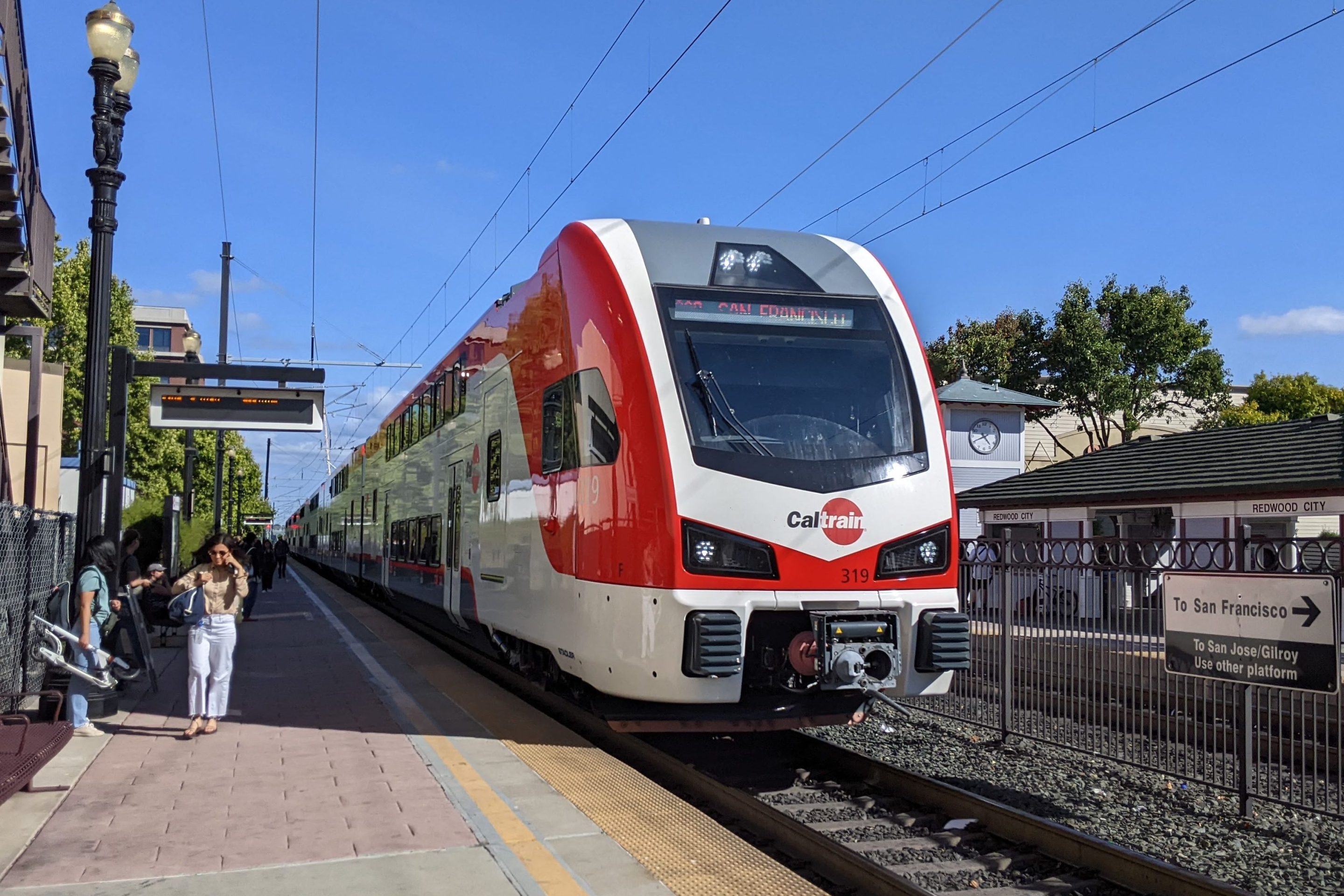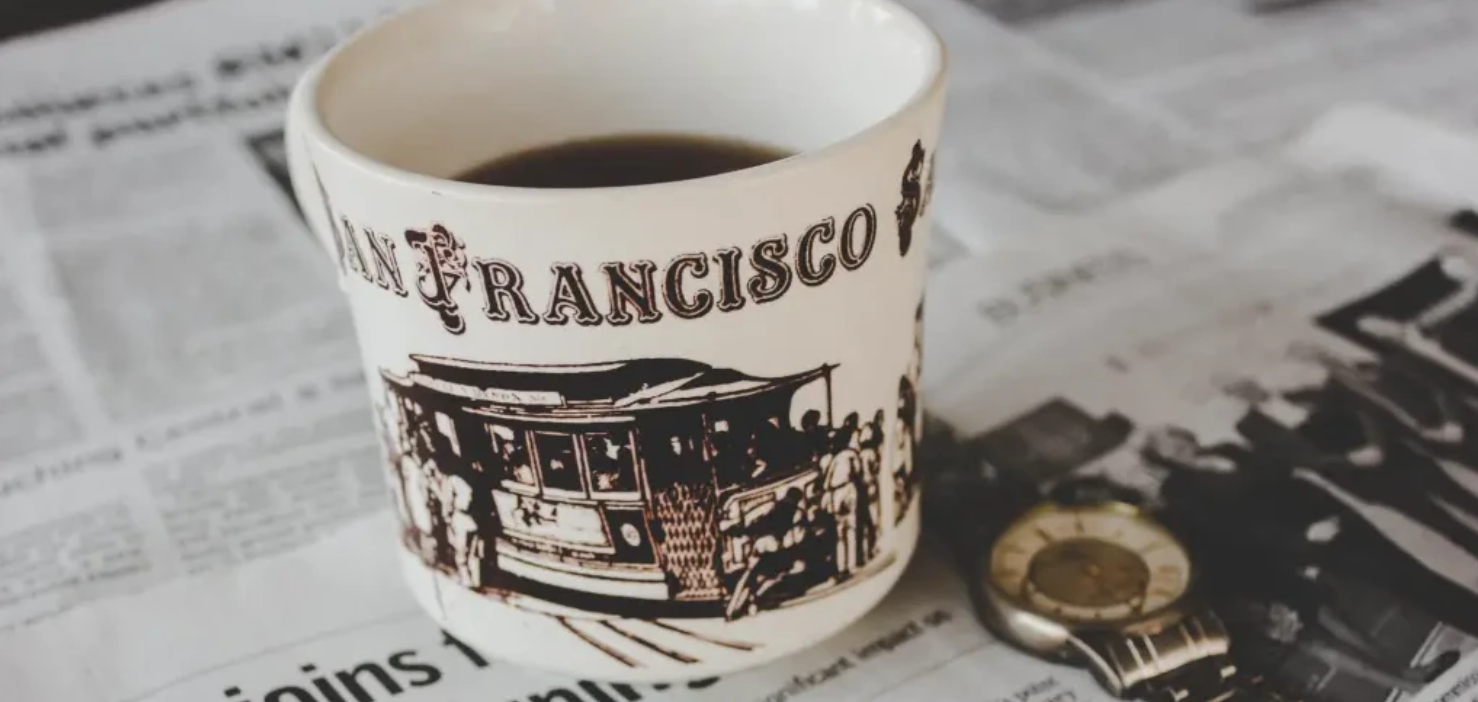There are two tunnels in Lyon, France, that connect the River Saône and River Rhône sides of the city, giving a direct route through a large hill. In length and size, they're comparable to the Webster and Posey tubes under the estuary channel, connecting Jack London Square in Oakland with Western Alameda.
There's one major difference, however: one of the tunnels in Lyon is car-free and used only for bicycles, pedestrians, and buses.
Alameda just celebrated the one-year anniversary of Woodstock, the water shuttle that has carried over 100,000 people across the estuary channel. Ridership has exceeded all expectations. At an event Sunday to mark the occasion, Brian McGuire, a planner at the city of Alameda, handed out ice-cream cones sans ice cream. Visitors to the celebration had to cross the channel on Woodstock to get a scoop of ice cream at the opposite dock, all courtesy of the city. Unfortunately, the boat left many people on the dock with its limited 31-person capacity. Sometimes that happens even when riders aren't bribed with free dessert.
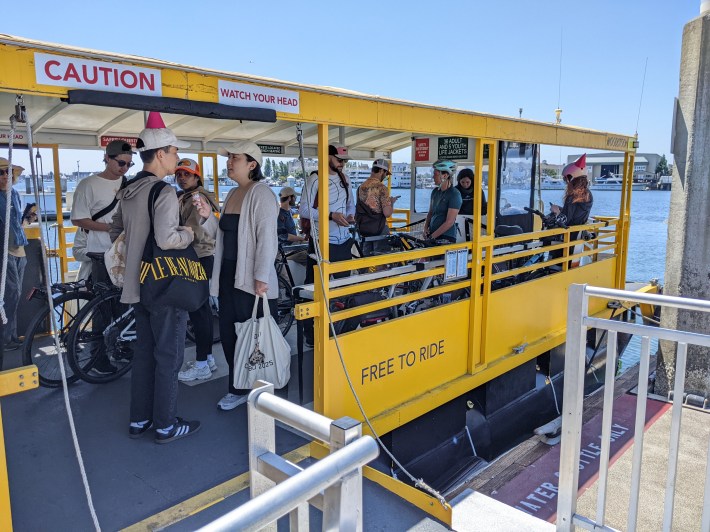
The party underscored the need for more service: there's a push on to get a second boat, which would allow the water shuttle to expand from six to seven-days-a-week. And long term, advocates hope to get a bike-and-pedestrian bridge funded.
Thanks to the event, there were lots of first-timers trying out the boat on Sunday. And there was an abundance of conversation about what would be required to fulfill the dream of getting a bridge or a purpose-built, fully funded, water shuttle that could meet the huge demand for people to move across the estuary without a car.
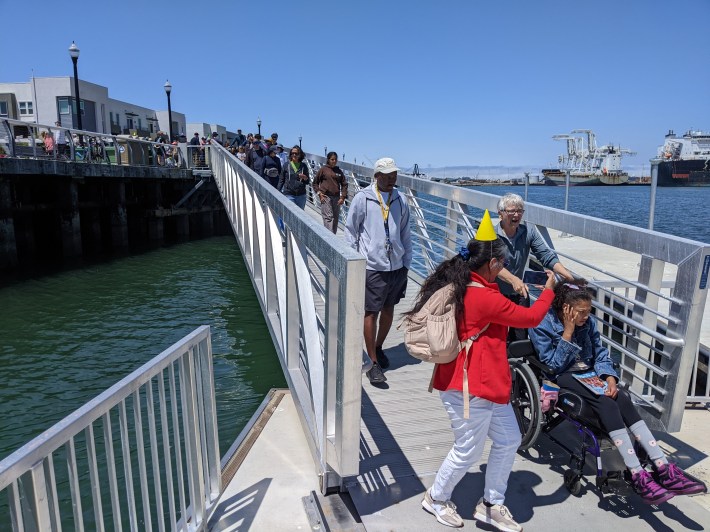
But political considerations aside, there's no need for a bridge or a water shuttle (nice as it may be). There are currently six car crossings connecting the island city of Alameda to Oakland and Bay Farm Island. That includes the two car tunnels, each with two lanes, connecting Chinatown and downtown Oakland directly with Western Alameda.
However, the only funded construction project to increase mobility to and from the island is a make-work ramp-widening to try in vain to get more cars from 880 to and from the tunnels. Utility relocation has already started.
Back in 2023, when I was at the Velo-Cities conference in Germany, I learned about Lyon's tunnels and how they handled similar mobility challenges. Instead of building more for cars, they decided to dedicate one of their two tunnels to non-car use. In the car-free tunnel, one lane carries buses in both directions (railroad-style gates control the buses so they don't end up nose-to-nose and a Jersey barrier keeps the buses out of the car-free space). The rest of the space in the tunnel is a well-lit, art-adorned passageway for cyclists and pedestrians. The second two-lane tunnel continues to carry cars. The videos below show what it's like:
When the Posey Tube was originally built in 1928, it was a two-way tunnel for cars. There was traffic backup. So in 1963, car-brained traffic engineers decided the way to maintain mobility was to build the Webster Tube, a second tunnel for cars. As usual, it didn't solve traffic.
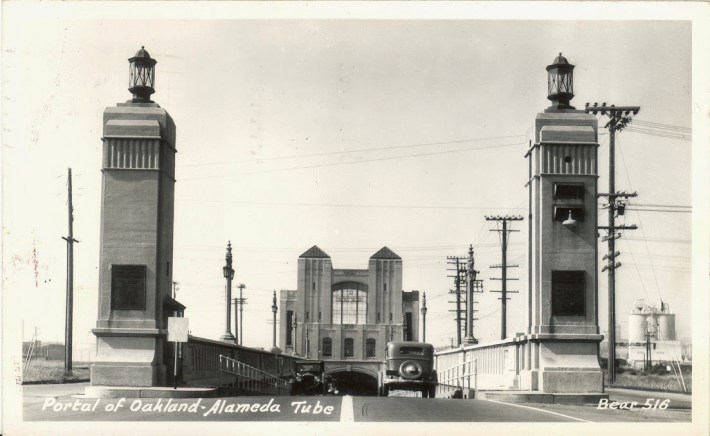
More than 60 years later, this cars-only, retrograde mindset continues to rule at Caltrans, evidenced by the aforementioned project to create new ramps and directly connect the Posey tube to the freeway, ostensibly to push more cars through it.
For a tiny fraction of what the taxpayer will foot for widening and re-arranging the ramps into the tunnels, they could adapt Lyon's solution and return the Posey Tube to two-way car traffic, as it was originally designed. Then the Webster tube could be repurposed for bikes and buses (or the other way around). That would move far more people for far less money. More importantly, it would provide a superior, environmentally progressive connection for bus riders and cyclists (and even pedestrians). Lyon has shown that even a tunnel can be fun and inviting for people once the cars (and the noise and pollution they cause) are removed.
But of course, they won't do that. Because "this isn't France," they'll say.
Of course, as with the Netherlands and Denmark, France wasn't France just a few years ago. Moreover, there was a time when tearing down the Embarcadero Freeway or, more recently, converting Great Highway to Sunset Dunes and JFK Drive to a promenade was considered a proverbial bridge too far. But brave politicians and dedicated activists got it done. And Alameda is already leading the way with Dutch-style, sidewalk-level bike lanes at "The Point" housing development in Western Alameda.
That's all great, but on balance, the state is still moving backwards and making a bigger and bigger mess for future generations to clean up. Anybody who doubts that should look at Highway 37, a recently approved project in Marin to widen a highway that will literally be under water in about 15 years. In fact, Caltrans is building massive, garbage projects all over the state, including in the Bay Area, that future generations will have to pay for and fix. For the region to truly move forward, advocates need to get Caltrans and the counties to stop moving it backwards.
That means we need politicians with the wherewithal to cancel the Oakland-Alameda ramp project and all widening. It's also time to move the Overton window on the Posey Tube and talk about what they did in Lyon. Let's start with an open-streets event one weekend in one of the tubes to see what people think. Other cities around the world have found inexpensive and relatively simple solutions to mobility and environmental problems. The answers are right there, just waiting to be copied.

